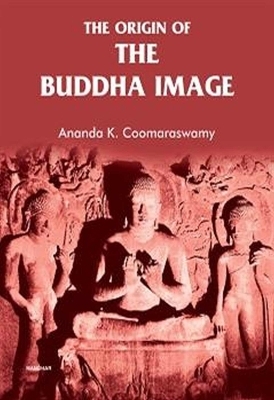
The Origin of the Buddha Image
Seiten
2023
Manohar Publishers and Distributors (Verlag)
978-81-19139-64-4 (ISBN)
Manohar Publishers and Distributors (Verlag)
978-81-19139-64-4 (ISBN)
The author writes further that Gandhara art is Indic, and not European. This book is highly recommended for scholars and researchers interested in Buddhist art.
The image of Buddha in Gandhara style depicted in the padmasana pose, is one of the most popular images of the world. This image is connected with the symbol of Buddhism apart from the Ashoka Chakra. Throughout ancient India, Buddha’s image gained popularity in the formation of Mahayana Buddhism. The major question that comes forth is how this art came into being during ancient times. This small volume on Buddhist art by Coomaraswamy challenges the notion that Buddha’s image did not emerge from the Indo-Greek and other non-Indian art styles like Kushana or Bactrian. He asserts that Buddha’s icon and its representation in various forms, found in monuments, sculptures, and other archaeological structures, was prevalent in the pre-existing Indian art forms. The book discusses the symbolisms, necessity of Buddha’s image, and anthropomorphic iconography in the creation of Buddha’s icons available in early India, and talks about the differences in Indian and historicity of Gandhara and Mathura art.
The image of Buddha in Gandhara style depicted in the padmasana pose, is one of the most popular images of the world. This image is connected with the symbol of Buddhism apart from the Ashoka Chakra. Throughout ancient India, Buddha’s image gained popularity in the formation of Mahayana Buddhism. The major question that comes forth is how this art came into being during ancient times. This small volume on Buddhist art by Coomaraswamy challenges the notion that Buddha’s image did not emerge from the Indo-Greek and other non-Indian art styles like Kushana or Bactrian. He asserts that Buddha’s icon and its representation in various forms, found in monuments, sculptures, and other archaeological structures, was prevalent in the pre-existing Indian art forms. The book discusses the symbolisms, necessity of Buddha’s image, and anthropomorphic iconography in the creation of Buddha’s icons available in early India, and talks about the differences in Indian and historicity of Gandhara and Mathura art.
Ananda K. Coomaraswamy (22 August 1877–9 September 1947) is a Ceylon-based metaphysician, historian, theorist, and philosopher of Indian art. He brought the Indian tradition of art into the western world. He was also seen as the bridge-maker between western and Indian art and philosophy, as he was much inspired by Hindu and Greco-Roman traditions.
| Erscheinungsdatum | 14.05.2024 |
|---|---|
| Verlagsort | New Delhi |
| Sprache | englisch |
| Maße | 230 x 300 mm |
| Themenwelt | Geisteswissenschaften ► Geschichte ► Regional- / Ländergeschichte |
| Geisteswissenschaften ► Religion / Theologie ► Buddhismus | |
| ISBN-10 | 81-19139-64-X / 811913964X |
| ISBN-13 | 978-81-19139-64-4 / 9788119139644 |
| Zustand | Neuware |
| Haben Sie eine Frage zum Produkt? |
Mehr entdecken
aus dem Bereich
aus dem Bereich
Erinnerungen
Buch | Softcover (2024)
Pantheon (Verlag)
16,00 €


